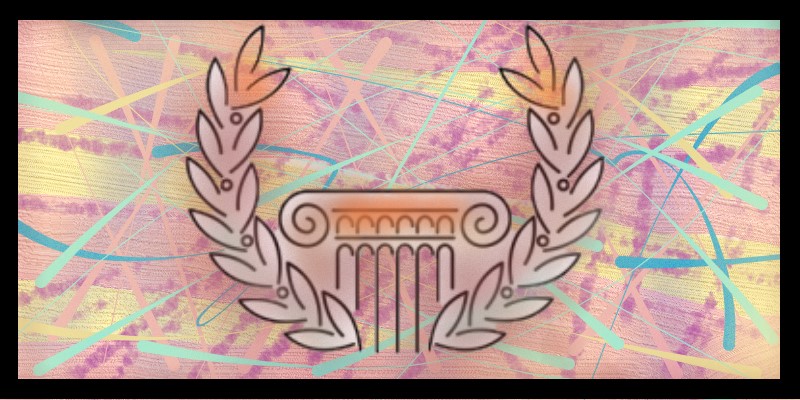Why you should read Maus by Art Spiegelman

Maus is not only a graphic novel, a biography, or an autobiography, it is a survival story.
The graphic novel genre is one of the aspects of Postmodernism. Maus by Art Spiegelman, in particular, shows that a controversial topic that has written a lot of times like the Holocaust can be seen from a different perspective and a different approach. This different approach does not only come from the genre of the work but also the symbolism of the characters and their faces.
There is no other horror than the Holocaust in the 20th century. It impacted the whole world and the ramifications will continue forever.
Art Spiegelman is interviewing his father Vladek Spiegelman, a Polish Jewish survivor from the Auschwitz concentration camp in Maus. As a son of a survivor, he witnesses the horror as well as the audience in this artwork.
Symbolism in Maus
In the graphic novel, Maus, characters have animal faces and these animal faces are determined by race. For instance, Germans are depicted as cats, Jewish people depicted as mice, and Polish are depicted as pigs. This is coming from the Nazi ideology that categorizes different races as sub-human and superior. Therefore, the animal faces in Maus symbolize the race issue and the life of different ethnic backgrounds in Nazi Germany during the 1940s. As one may conclude, the novel is about Racism. However, It is not only about that. This is not an academic piece about Auschwitz or racism in Germany. This novel is about people.
“It was a paradigm-shifting book. Afterwards, comics were no longer jejune adventures for kids – blah, blah, blah – and so every new comic book must be compared to it. Mass culture is so fucking stupid. It says that what’s important about Maus is that it’s about the Holocaust. Sure, Maus cut through a lot. Suddenly, you could write about really serious things in a comic. But in the caricature version, that ended up as meaning that things [always] had to be ponderous. I suppose you could say that the rest of my life has been spent figuring out how to walk around it.” – Art Spiegelman

Credit (Maus by Art Spiegelman, 2008)
Why mouse, pig, and cat?
Moreover, the mice and the pigs are associated with being dirty and unwanted in the living area. This issue and how the race depicted and portrayed in the novel with these certain animals suggests that graphic novel shows the ideology and the perception of the Nazi era. Depicting the oppressed as mice or pigs and the oppressor as the cats firstly, it justifies the action of the oppressor which is also done by the Nazis during the 30s and 40s by the propaganda.
Pages from 50 to 58 are particularly about the concentration camp Auschwitz and the harsh environment of the camp on the individuals like Vladek and his wife Anja. While the people in the camp portrayed as mice and sometimes mice with pig masks, Germans are depicted as cats. On page 50, this can be seen when one particular person claims that he is actually a German. This difference in animal species can be seen as how racism can be expressed through animals. In nature, cats are associated with catching mice and the cleaner of the house from the dirty animals.
Secondly, choosing unwanted species creates an anti-sympathy towards the oppressed people. However, Maus as a postmodern text actually shows the otherwise. It uses the ideology and the portrayal of the people by the Nazis during the 40s, but at the same time using individual aspects of the characters and the genre of graphic novel to show a completely different perspective.

Credit (Maus by Art Spiegelman, 2008)
Overall
This is not a book review, one cannot review or comment on the lives of others. Maus is an experience. Maus is a masterpiece that is not only about the story itself, but in terms of literature in general as well. This is one of the best representations of the postmodernism genre.
Reading Maus, one does not hate or other the mice, but feels sympathy towards them and blames the cats for it. Yet, Maus even shows that not every cat is the same, and some show sympathy towards Vladek which also shows that one cannot generalize a trait or an action towards a certain group but every individual is different from another.
It is not about sides, but it is about dissolving the sides. Therefore it is more than the story it tells. In a world, where conflicts are rising in every country, in every corner Maus is a timeless novel that you should definitely read.
Sources:
Art Spiegelman: “Auschwitz became for us a safe place.” (2011, October 23). The Guardian. https://www.theguardian.com/books/2011/oct/23/art-spiegelman-maus-25th-anniversary
Doherty, T. (1996). Art Spiegelman’s Maus: Graphic Art and the Holocaust. American Literature, 68(1), 69-84. doi:10.2307/2927540
Ewert, J. (2000). Reading Visual Narrative: Art Spiegelman’s “Maus”. Narrative, 8(1), 87-103. Retrieved May 9, 2021, from http://www.jstor.org/stable/20107202
Maus by Art Spiegelman. (2008, July 16). [Comic]. Flickr. https://www.flickr.com/photos/johnjack/2673470436
Spiegelman, A. (1996). The Complete Maus. Pantheon.







